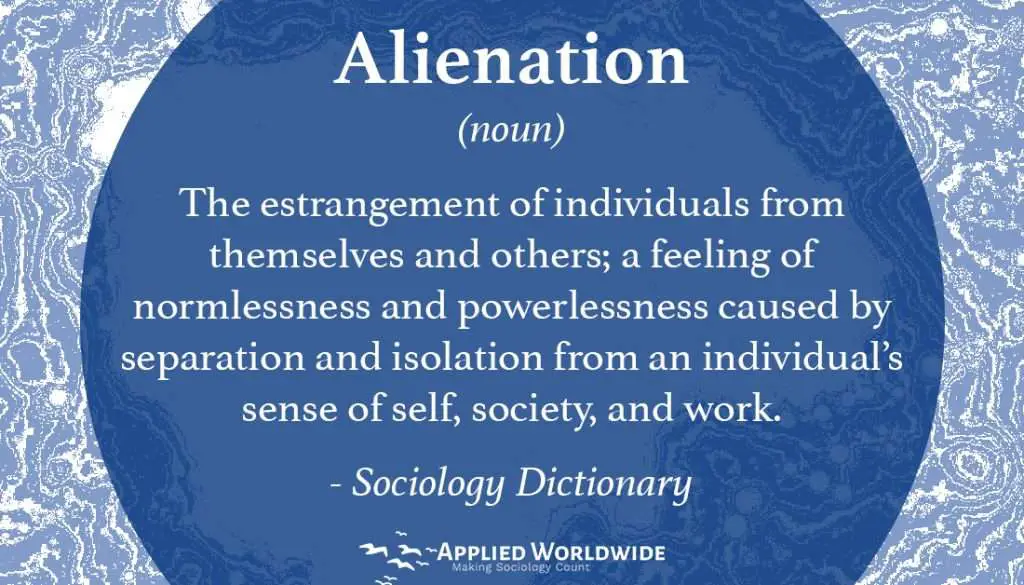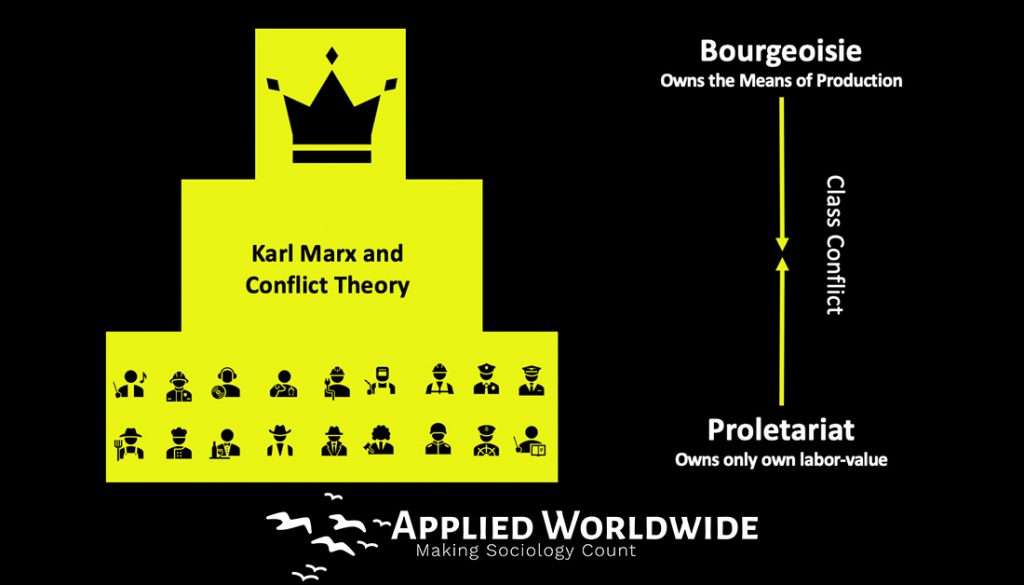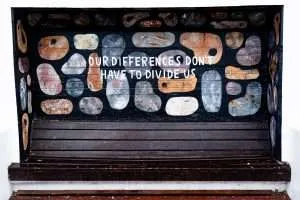Conflict theory is one of the original theories in sociology from which many of our contemporary theories have stemmed. In sociology we often attribute conflict theory to Karl Marx, although Marx is not the only conflict theorist. Marx’s early version of conflict theory revolved around social class. While social class still has a place in contemporary conflict theory, it has evolved to include gender, race, and other structures of inequality. With that said, there are several terms to be familiar with if you really want to understand conflict theory.
In this blog, we delve into the concepts of alienation, class conflict, bourgeoisie, proletariat, class consciousness, horizontal violence, and false consciousness. While these may not be the only terms you need to know, it will give you a good start!
1. Alienation

At the heart of conflict theory lies the concept of alienation, a term popularized by Karl Marx. Alienation refers to the sense of disconnection and estrangement individuals experience from their labor, the products of their labor, and ultimately, from themselves. Understanding alienation provides a lens through which you can analyze how societal structures contribute to a sense of detachment among individuals, influencing their identity and relationships within a larger context.
2. Class Conflict
Conflict theory posits that society is inherently marked by class conflict, a perpetual struggle between different social classes vying for power and resources. The bourgeoisie, or capitalist class, seeks to maintain control over the means of production, while the proletariat, or the working class, aims to challenge and alter these power dynamics. Recognizing the tension between these classes is pivotal for comprehending the broader conflicts that shape societal structures.
Bourgeoisie
The bourgeoisie represents the owners of the means of production in a capitalist society. These individuals or groups control economic resources, shaping the structures that influence social, political, and cultural dynamics. Understanding the bourgeoisie’s role is essential for grasping how economic power translates into broader societal influence, contributing to the perpetuation of inequalities.
3. Proletariat
On the flip side, the proletariat constitutes the working class, whose labor contributes to the production of goods and services. Conflict theory highlights the power imbalances between the proletariat and the bourgeoisie, emphasizing how the working class often faces exploitation and oppression. Exploring the experiences of the proletariat sheds light on the consequences of class divisions within society.

4. Class Consciousness
Class consciousness refers to the awareness among members of a social class regarding their shared interests and the recognition of the inequalities they face. For conflict theorists, the development of class consciousness is crucial for social change. Analyzing how individuals become aware of their position in the social hierarchy and unite against oppressive structures provides valuable insights into the potential for collective action.
5. Horizontal Violence
While conflict theory traditionally emphasizes vertical conflicts between different social classes, it is equally important to recognize horizontal violence. This concept refers to conflicts and aggression between groups at the same level in a social hierarchy, often fueled by internalized oppression. Exploring instances of horizontal violence adds nuance to the understanding of how societal tensions manifest not only between classes but also within them.
6. False Consciousness
False consciousness is a concept that encapsulates the misperceptions and beliefs held by individuals within a social class that run counter to their own best interests. According to conflict theory, false consciousness can be perpetuated by dominant ideologies that serve the interests of the ruling class. Unraveling false consciousness is pivotal for individuals to recognize and challenge the systems that contribute to their own oppression and reach class consciousness.
Final Thoughts on these Seven Key Concepts of Conflict Theory in Sociology
Armed with a grasp of these seven key concepts—alienation, class conflict, bourgeoisie, proletariat, class consciousness, horizontal violence, and false consciousness—you can delve into the rich tapestry of conflict theory. These concepts provide the necessary tools to analyze power dynamics, societal structures, and the intricate interplay between different social groups. As you navigate the landscape of sociology, let these concepts be your guide, unveiling the layers of complexity that define the ever-evolving structure of human society.







